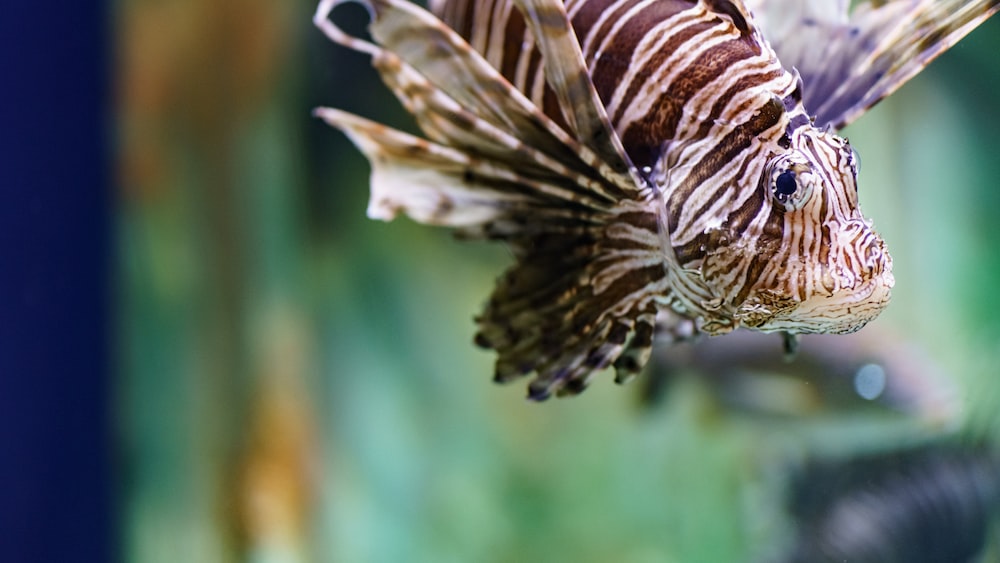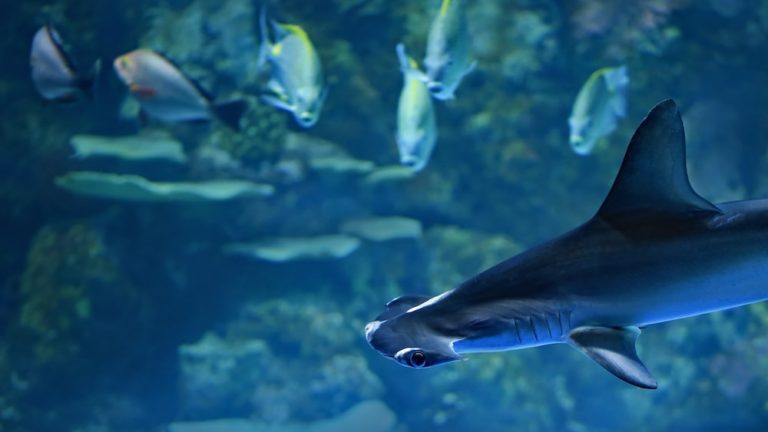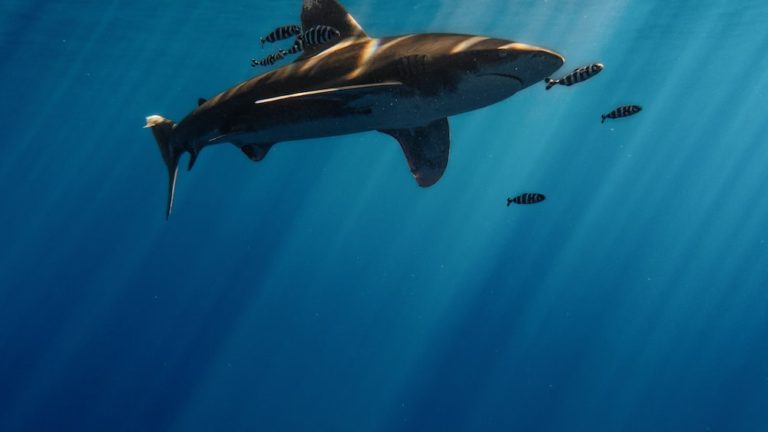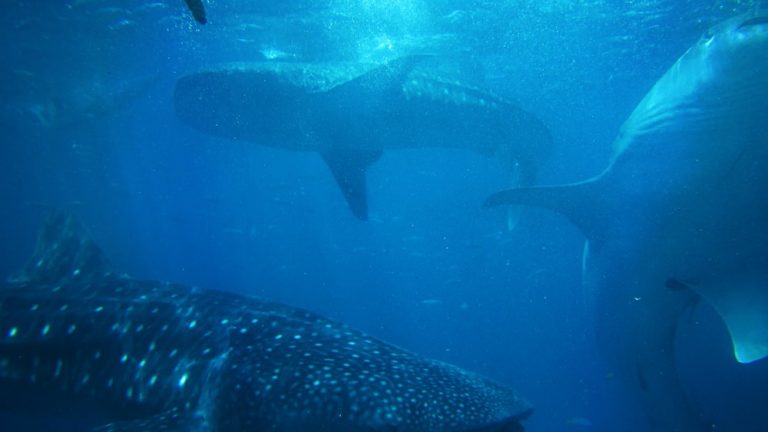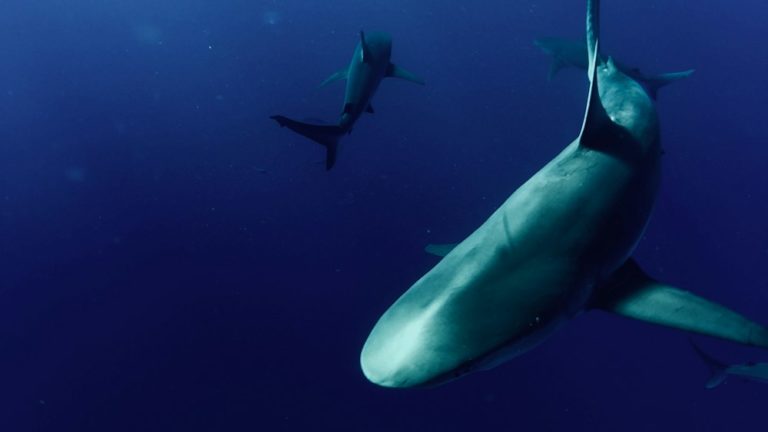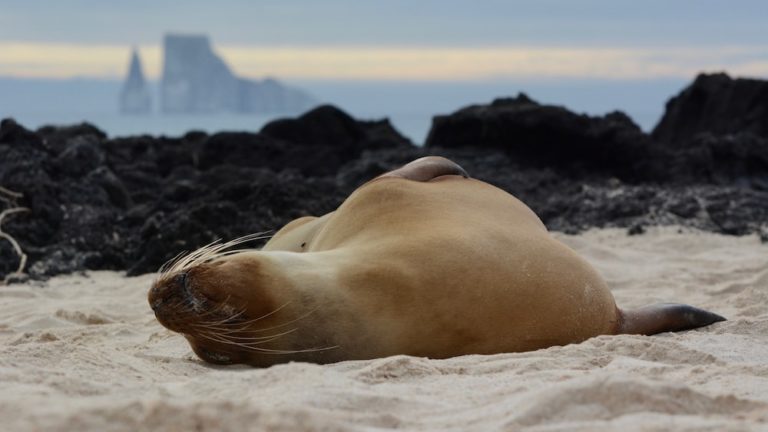What Are Dolphins Scared Of: The Truth Revealed
What Are Dolphins Scared Of: The Truth Revealed
Dive into the blue as we embark on a quest to uncover what are dolphins scared of. These magnificent mammals glide through the waves with a grace that belies their underlying anxieties. As champions of marine majesty, dolphins have long captured our hearts with their playful antics and sociable nature, often leaving us to marvel over whether anything could possibly ruffle their serene existence.
Key Points:
- Dolphins have fears including predation, human activities, and environmental stressors.
- Natural predators of dolphins include sharks, killer whales, and large fish.
- Human activities such as noise pollution, chemical pollution, and fishing pose threats to dolphins.
- Dolphins exhibit behavioral responses to fear, including evasion and escape tactics, group defense, and changes in communication.
- Conservation efforts and responsible tourism are crucial for protecting dolphins.
- Legislation and global initiatives play a key role in dolphin protection.
- Understanding and addressing dolphin fears is essential for their conservation and well-being.
And yet, beneath the shimmering surface lies a world of challenges that can send even the sprightliest of dolphins into the depths of dismay. As marine life enthusiasts, eco-adventurers, and conservationists, let’s navigate through the turquoise trenches, unraveling the tangled seaweeds of myth to reveal the stark realities of these sentient sea-dwellers’ fears.
The ocean is a vast expanse, and for dolphins, it’s both a playground and a battlefield. In this exploration, we’ll merge the keen eye of biology with the empathetic spirit of conservation to shine a light on the threats that stalk our aquatic allies. With each ripple of discovery, we hope to foster a deeper bond between us land-dwellers and the dolphinarium of the deep.
Unveiling the Fears of Dolphins
In the rippling reflection of waves, the question surfaces: what are dolphins scared of? That simple query launches us into a grand voyage through the unknown, seeking out the hidden perils of the deep that haunt the peaceful play of one of the ocean’s most beloved inhabitants. As we set sail on this journey, the veil over the complexities of dolphin fears begins to lift.
Common Misconceptions About Dolphin Fears
The tales of the sea are as plentiful as the fish that inhabit it, and some stories have led us to believe that dolphins live without fear. This notion paints them as the smiling swimmers, eternally frolicking through a carefree existence. But even these agile aquatic acrobats have their share of scares, and the misconceptions surrounding their fears are as murky as a silt-stirred seabed.
Many assume that dolphins, being the intelligent and social creatures they are, would only fear the things that their human admirers do – like the discomfort of captivity or the sharp bite of a hook. But their fears span beyond these human-imposed hazards, woven into the very fabric of their marine world.
Dolphins have fears that go beyond human-imposed hazards and are woven into the fabric of their marine world.
The Reality of Predation in the Dolphin World
While the dolphin’s grinning visage might suggest a life free of fright, the reality is that the threat of predation looms as large for them as it does for any creature of the sea. The vast oceanic expanses they call home bristle with predatory challenges that can make any dolphin’s sonar-infused heart skip a beat.
The list of oceanic offenders is a scroll of the sea’s savviest, but topping that list, more often than not, are the sharks – those infamous cartilaginous cruisers whose very silhouette can send a shiver down a dolphin’s dorsal fin. Contrary to popular caricature, not all dolphins are adept at evading these stealthy swimmers, and the constant vigilance required can be draining.
Human Activities and Their Impact on Dolphins
For centuries, humans have been enamored with dolphins, yet our actions have inadvertently woven a net of nightmares for our aquatic companions. The collisions of nautical traffic; the deafening roar of sonar and engines; these are but a fragment of the fears dolphins navigate.
The impact of this species – so capable of marvel and destruction – is profound. Dolphins, with their keen intelligence and sophisticated social structures, can sense and suffer from the cacophony and chaos we cast into their briny realm. But it’s not just the immediate threat; the long-term implications of such stresses have yet to fully surface.
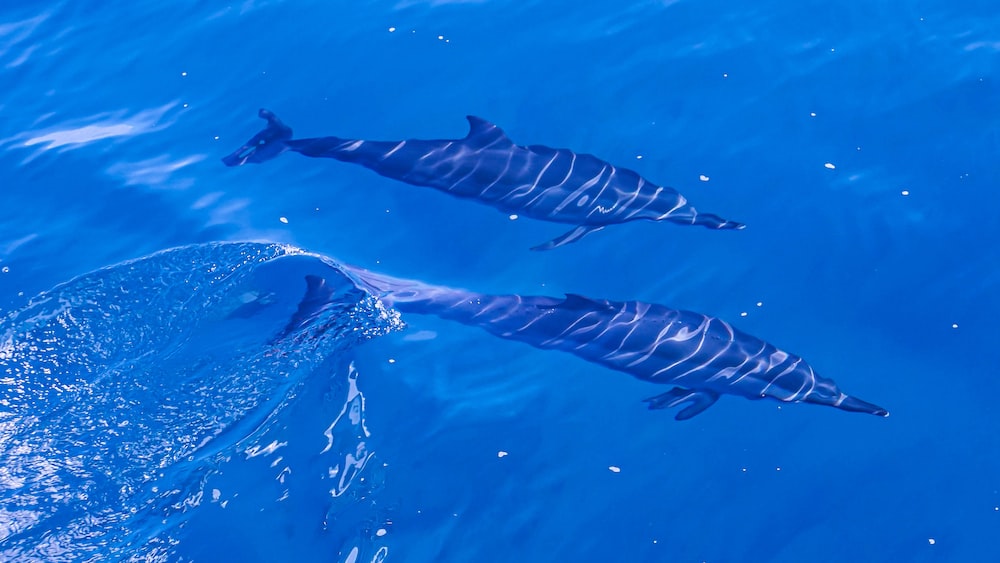
Natural Predators of Dolphins
Amidst the ebbs and flows of their oceanic odyssey, dolphins encounter a host of natural predators that vie for the title of underwater menace. These encounters are harsh reminders of nature’s unforgiving side, where the line between predator and prey is as thin as a fish fin.
Sharks: Myth vs. Reality
In the depths of the sea, where the play of predator and prey unfolds, sharks occupy a special place in the dolphin’s world of woes. The myth that dolphins are natural adversaries capable of besting a shark in combat pervades, yet the truth is far more nuanced.
While it’s true that dolphins occasionally display remarkable tactics to defend themselves and their pod, these intelligent mammals still approach sharks with a warranted wariness. Not all encounters are epic standoffs, and sometimes, a swift retreat is the most prudent choice.
Killer Whales: Apex Predators of the Sea
As top-tier hunters, killer whales sit at the zenith of the food chain. Their sheer size and strategic prowess make them a formidable foe for any sea creature, dolphins included. These black and white giants employ cunning and power to maintain their spot as apex predators, a title that’s not just handed out like free samples at a fish market.
Dolphins, in the presence of these oceanic overlords, must navigate the waves with both respect and circumspection, for an encounter with killer whales could turn their world upside down. It is a dance of delicate dynamics where one wrong move can lead to dire consequences.
Navigating the presence of powerful individuals requires respect and circumspection, as one wrong move can lead to dire consequences.
Large Fish and Other Marine Threats
When we ponder what are dolphins scared of, our minds rarely wander to those beneath the killer whale in the predator hierarchy. Yet, large fish, such as certain barracuda or even some marine mammals like aggressive seals, can induce a sense of dread in dolphins. The sea abounds with clandestine confrontations that seldom breach the surface for human observation.
These unlikely threats can attribute their fear factor to their unpredictability. Just as a rogue wave can catch an unsuspecting swimmer, these formidable fish can catch a dolphin off guard – and in the open sea, surprises are rarely a welcome affair.
Environmental Stressors and Threats
Beneath the iridescent waves and waltzing water creatures lies a reality far grimmer than any creature of the deep might wish for. It’s not just the direct predator-prey relationships that form the tapestry of terror for dolphins; rather, it’s the environmental stressors and threats that cast a long shadow over their underwater ballets.
Noise Pollution: A Sonic Nightmare for Dolphins
Noise pollution: the unseen contaminant in our oceans, is a veritable sonic nightmare that torments dolphins. The cacophony produced by ship engines, seismic surveys, and marine construction projects disrupt not just the dolphins’ sonar-based navigation but also their communication, and, in the worst cases, their very survival.
This audial affront fractures the sea’s symphony, to which dolphins are so harmonically attuned. The world of silence, once their sanctuary, is increasingly pierced by these industrial intrusions. The repercussions are felt deep in their echolocation-oriented lives – a true dissonance in their once tranquil aquatic existence.
Chemical Pollution and Its Effects on Dolphin Habitats
Imagine the ocean as a vast, living canvas, and dolphins as the brushstrokes that animate it with grace. Now, imagine that canvas being sullied by chemical pollutants, the kind that sow the seeds of sickness not just in the water but within the bodies of these majestic mammals.
Toxins from industrial runoff to oil spills weave their way up the food chain to dolphins, who sit near the top. As a result, their once pristine homes become toxic. These chemical assailants are silent yet deadly, often striking with a venom that accrues subtly but significantly.
Picture the ocean as a beautiful canvas, with dolphins as the graceful brushstrokes, and realize that their pristine homes are being contaminated by silent yet deadly chemical pollutants, affecting not just the water but also the bodies of these majestic mammals.
Climate Change and Its Role in Dolphin Displacement
Anchoring these profound pressures on dolphin populations is the looming leviathan of climate change. Its sweeping effects are reshaping the oceans in ways that, for dolphins, can spell displacement and disaster. Rising sea temperatures alter the distribution of prey species, sending dolphins on ever-longer forages that strain their physical and social bonds.
Melting ice caps and changing currents also tweak the tapestry of their aquatic territories, driving dolphins into unfamiliar waters where the rules of survival are rewritten. To them, climate change is less a buzzword and more a storm on the horizon, threatening to engulf their very way of life.

Human-Induced Fears in Dolphins
The profound connection between humans and dolphins is a two-edged sword, capable of awe as much as aghast. Here in the human chapter of their story, we find not just wonder, but worry, woven by our own hands into the waters of their world.
The Perils of Fishing Nets and Equipment
As humans trawl the oceans for bounty, they inadvertently cast shadows of dread over dolphin populations. The invisible threats of fishing nets and equipment lurk beneath the waves like ghostly traps, ready to ensnare unwary fins. Entanglement can mean a slow and distressing end for a dolphin, a fear that is as tangible as the tangled meshes themselves.
Addressing the problem requires innovation and empathy. Solutions lie in safer net designs and better fishing practices that allow dolphins to glide by unharmed. Through such measures, the ocean can become less a place of peril and more a home of harmony.
The Stress of Captivity and Human Interaction
While it’s often with affection that humans draw dolphins into their world, the reality for these marine denizens can be fraught with anxiety. The confines of captivity and intense human interaction are foreign waters for dolphins, who thrive on the freedom of the boundless seas.
The walls of tanks echo with limitations to their natural behaviors, and while human touch may bring momentary delight, it can also foster unease. In the end, respect for their wild nature may be the truest form of kinship we can offer these gentle geniuses of the ocean.
Respect for the wild nature of dolphins may be the truest form of kinship we can offer these gentle geniuses of the ocean.
Boat Traffic and the Risk of Collisions
Emerging from the azure depths, dolphins often find themselves in a clash between their natural world and our constructed one. Increased boat traffic has turned their turquoise highways into a bustling obstacle course, and for dolphins, the risk of collision is like playing an aquatic version of Frogger – except the stakes are much higher. Rambunctious and curious by nature, they may come too close to propellers and hulls, leading sometimes to injuries or even mortal peril.
It’s a sobering thought, but when a boat speeds through waters frequented by these intelligent beings, it’s akin to us crossing a road with our eyes closed. Such encounters can not only cause immediate physical harm, but can also lead to stress and behavioral changes, as their serene aquatic realm is constantly interrupted by human marine traffic.
Behavioral Responses to Fear in Dolphins
As emboldened adventurers of the sea, dolphins’ responses to fear are as varied as the oceans they inhabit. Consistently nimble and quick-thinking, they employ a plethora of strategies to evade threats and maintain their place in the marine tapestry. Just like us, when faced with a challenge, dolphins’ behaviors adapt, showcasing their rich emotional tapestry and keen senses of survival.
Evasion and Escape Tactics
When a threat looms in their oceanic playground, dolphins don’t just flip their fins in despair; they spring into action with the finesse of escape artists. Sharp, sudden turns and high-speed sprints are their go-to moves for slipping away from predators or evading uncomfortable close encounters. They can burst into an exhilarating display of acrobatics and jumps, not just for our applause but also to put distance between them and danger.
Their streamlined shapes work wonders as they slice through the water, using their sonar to navigate with precision to safer waters. They are the Houdinis of the high seas, often utilizing the topography of the ocean – like shallow areas or reefs – to their advantage. Moreover, by swimming in synchronized groups, they can create confusion and even deter some predators thanks to their collective agility.
Social Dynamics and Group Defense
Now, let’s dive into the social whirlpool that governs how dolphins defend themselves – yes, there is safety in numbers. These cetaceans are known for their tight-knit groups, called pods, which act as round-the-clock neighborhood watches. In the face of a threat, it’s astounding how their graceful choreography takes a tactical turn, often forming protective circles around the vulnerable, like calves or injured companions.
The pod dynamics resemble an underwater ballet of solidarity; older and stronger members may confront predators head-on, while others shepherd the less capable to the core of the formation. This is where bottlenose dolphins often shine, reinforcing the belief that unity is indeed strength in the marine world. They even have specific roles during these maneuvers, effectively orchestrating a collective defense that few intruders can penetrate.
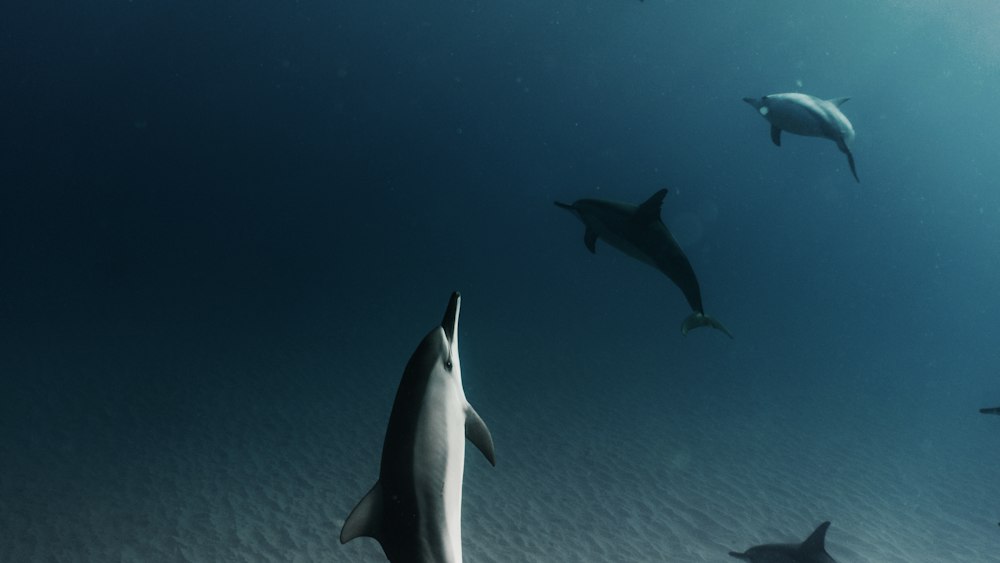
Unity and cooperation within dolphin pods provide a collective defense that reinforces the belief that safety and strength lie in numbers.
Changes in Communication and Vocalizations
Now, let’s echolocate our attention to how dolphins ‘speak’ when spooked. They are the chatterboxes of the seas, with a vast repertoire of clicks, whistles, and pulses that paint their audible stories. Much like us, when frazzled, their ‘conversations’ can get flighty, increasing both in frequency and pitch. These changes can serve as alarms, alerting the pod to danger and synchronizing their evasive escapades.
At times, dolphins might go completely silent, using the sound of silence as a cloak against predators who eavesdrop on their usual banter. Conversely, some may call more loudly or intensely, a bold attempt to intimidate or distract a potential threat. Their vocal versatility is not just for social bonding but is a critical tool in their survival toolkit.
Protecting Dolphins from Their Fears
Shielding our finned friends from the specters that haunt them requires a blend of passion and practicality. Recognizing what are dolphins scared of leads us to an understanding that conserving their habitat and promoting their welfare is not a choice but a necessity. Crafting a marine environment where dolphins can thrive without fear is beneficial not only for them but also for the rich tapestry of sea life that shares their home.
Conservation Efforts and Safe Practices
In our quest to protect dolphins, conservation efforts take center stage, with researchers and enthusiasts alike conquering the waves of challenges. Safe practices include implementing ‘no-go’ zones for boats in crucial habitats or during specific times like nursery periods for calves. Regulatory speeds for vessels traversing dolphin-inhabited waters can also make a splash in reducing collision risks.
Furthermore, wildlife-friendly fishing gear and improved waste management are vital steps in ensuring bottlenose dolphins and their marine cohorts do not encounter a grim fate. Each of these practices can benefit from the support of a well-informed public – that’s you, eco-adventurers – ready to advocate for legislation that empowers our aquatic allies.
Protecting dolphins involves creating ‘no-go’ zones for boats, regulating vessel speeds, using wildlife-friendly fishing gear, and advocating for legislation to support conservation efforts.
Responsible Tourism and Dolphin Safety
The tapestry of dolphin conservation is also woven with the threads of responsible tourism. Those remarkable encounters where humans and dolphins share a moment in the brine can be enchanting, but it’s paramount to approach with care. Guidelines for responsible viewing – like maintaining a respectful distance and avoiding feeding or touching – ensure these experiences don’t cross the line into harassment.
For the eco-enthusiast navigating these waters, your choices make waves. Preferring tour operators who respect wildlife regulations, and participating in dolphin watching only with accredited guides, sends a clear message for sustainability and safety. By adhering to these principles, our love for dolphins translates into protective actions that secure their oceanic ballet for future generations.
Legislation and Global Initiatives for Dolphin Protection
The global orchestra of dolphin protection plays a tune that resonates with legal measures and international cooperation. Legislation such as marine protected areas (MPAs) provides a legal backbone, safeguarding critical regions of the oceans and ensuring bottlenose dolphins have safe havens. Global initiatives like the Convention on International Trade in Endangered Species (CITES) contribute to controlling international trade, curbing the flow of wildlife products, and offering these intelligent creatures a fighting chance against exploitation.
It’s imperative that countries collaborate on research and conservation strategies to create a network of support. Cross-border marine sanctuaries and international agreements, like those aimed at reducing bycatch, are stepping stones towards a safe and healthy future for dolphins. Both individuals and nations must row in unison towards a future where the question of “what are dolphins scared of” shifts towards “how are dolphins thriving.”
FAQs
1. What natural predators do dolphins have to be wary of?
Natural predators that dolphins have to be wary of include larger shark species, such as the great white and tiger sharks, as well as orcas, commonly known as killer whales. These apex predators pose a real threat to some dolphin species, particularly when dolphins venture into deeper waters or stray from their pods.
2. How does noise pollution affect dolphins?
Noise pollution affects dolphins by disrupting their communication, navigation, and feeding behaviors. Loud and persistent underwater noise can cause stress, interfere with their echolocation abilities, and ultimately lead to displacement from important habitats.
3. Can dolphins experience stress from human activities?
Dolphins can experience stress from human activities such as fishing, boating, and habitat destruction. These activities can disrupt their social structures, reduce their food supply, and lead to physical harm, all of which contribute to heightened stress levels in dolphin populations.
4. What measures can be taken to reduce the threats dolphins face?
Measures to reduce the threats dolphins face include establishing and enforcing marine protected areas, implementing responsible fishing practices to minimize bycatch, regulating boat traffic, and raising public awareness about the importance of dolphin conservation.
Conclusion
As we resurface from this deep dive into the world of dolphins and their fears, it’s essential to reflect on our own ripples in their vast ocean home. Knowing what are dolphins scared of helps us chart a course towards coexistence, brimming with respect and mindful of the intricate dances beneath the waves. It’s up to each one of us, salty sea dogs and landlubbers alike, to anchor our actions in the conservation of these remarkable marine mammals.
In the grand symphony of the sea, dolphins play a melodious part, and it is our responsibility to ensure their song goes on for eons to come. Let’s cast a wide net of protection around them, ensuring their fears stay in the shadow of our tireless efforts to safeguard their future. And with that, dear readers, it’s time to dock our ship of discovery. I hope these tides of knowledge have brought you closer to understanding the delicate balance of the marine world. Until our next expedition, may your hearts always feel the gentle pulse of the ocean.
Warm regards and calm seas,
Jasper Flynn

